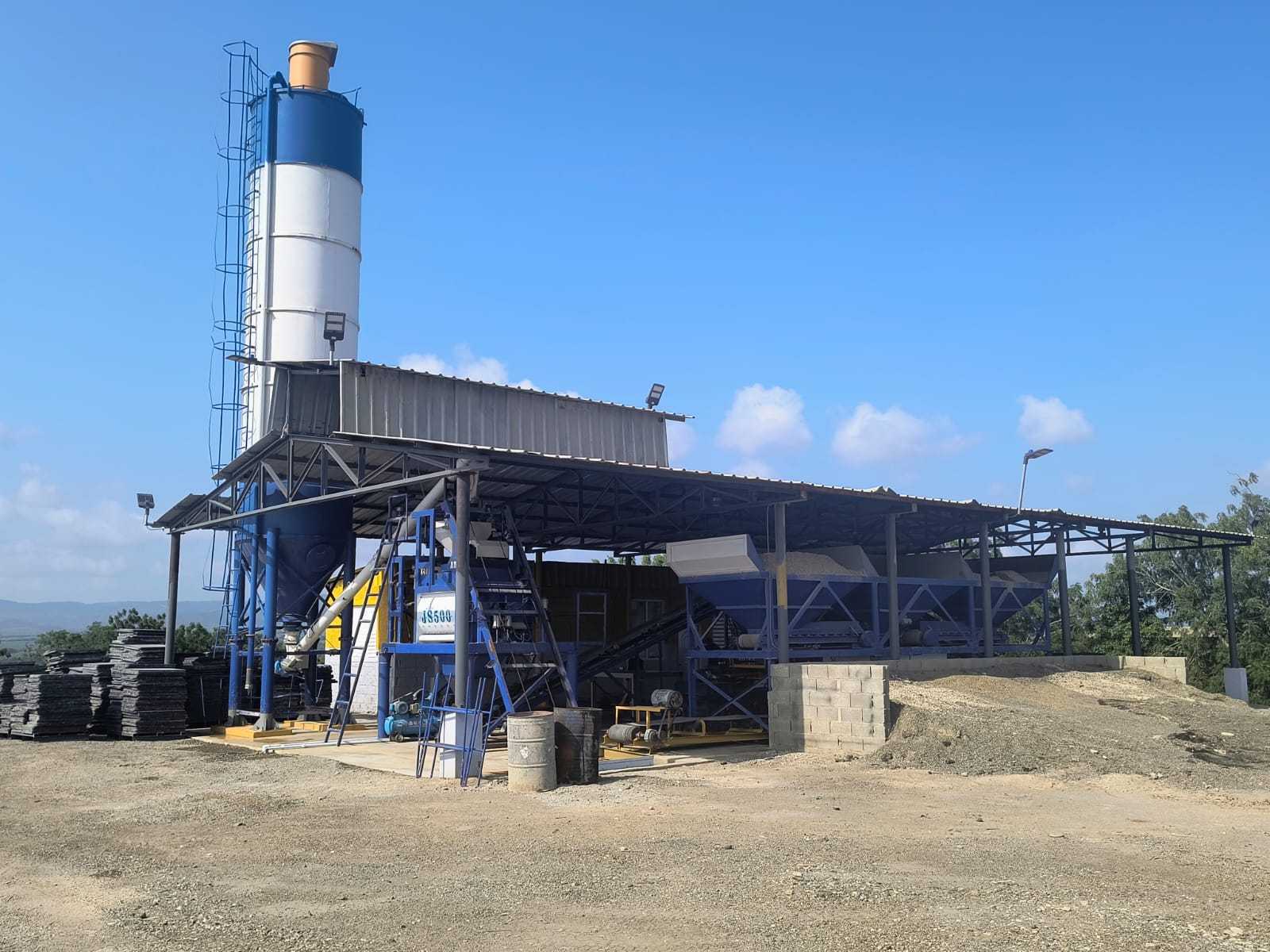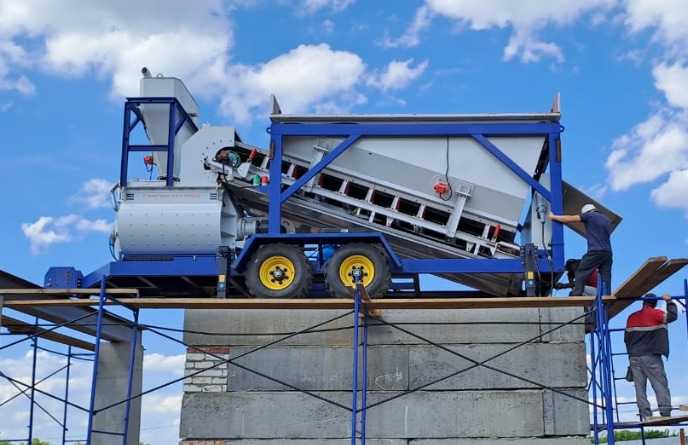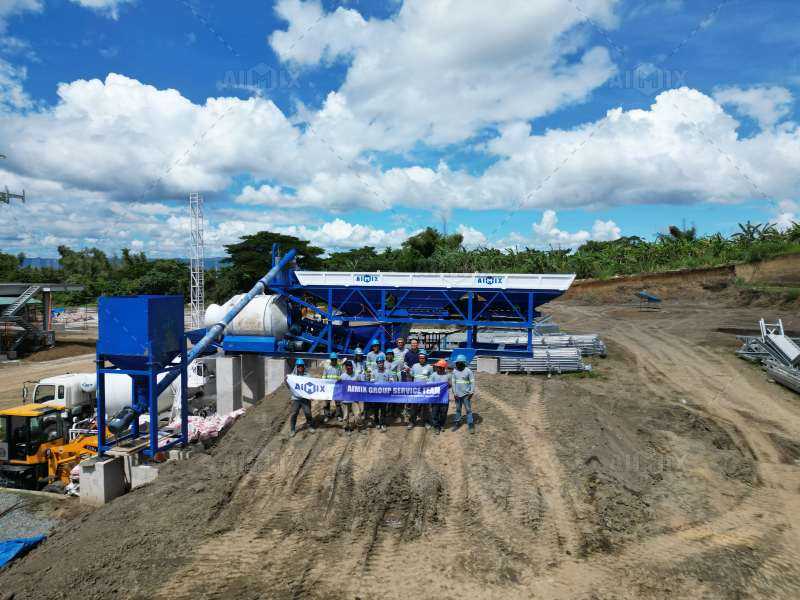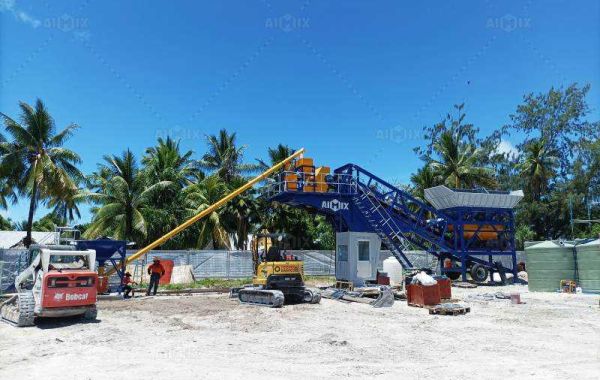Concrete batching plants are essential in modern construction, enabling consistent, high-quality concrete production for a wide range of projects. In recent years, mini concrete batching plants have gained traction as a flexible, cost-effective alternative to traditional standard-sized plants. With growing demand from small to mid-sized projects, the market is witnessing a shift in preferences, especially in developing regions and urban construction zones.
This article explores the key differences between mini and standard concrete batching plants from a market perspective, comparing their capabilities, pricing, target users, and growth trends.

What Are Mini and Standard Batching Plants?
Mini Concrete Batching Plants
Mini batching plants are compact and portable systems designed for low to moderate concrete production. Typically, they have a capacity ranging from 10 to 35 m³/h, and are often used in:
Small construction sites
Rural and remote areas
Short-term or mobile projects
Individual contractors or start-up concrete suppliers
They usually feature simplified setups, manual or semi-automatic controls, and can be skid-mounted or trailer-mounted.
Standard Concrete Batching Plants
Standard (or large-scale) batching plants are high-capacity production units designed for commercial concrete production or infrastructure projects. These plants can produce 50 m³/h and above, and are ideal for:
Large construction companies
Infrastructure and public works projects
Ready-mix concrete production for sale
High-volume, continuous use
Standard plants may include full automation, advanced mixing systems, and elaborate material storage facilities.
Market Demand Target Segments
Growing Demand for Mini Plants
The demand for mini concrete batching plant is surging due to:
Urban infill projects where space is limited
Remote projects requiring mobility and flexibility
Developing economies where initial investment capacity is lower
Residential housing booms, especially in Southeast Asia, Africa, and Latin America
Mini plants offer an easy entry point for small contractors and concrete entrepreneurs, especially where labor is cheap and land availability is limited.
Continued Dominance of Standard Plants
Despite the mini plant boom, standard plants still dominate in:
Developed economies with high infrastructure spending
Regions with large-scale commercial or government-funded construction
Projects requiring high volume, consistent quality, and automation
Countries like the U.S., China, and parts of Europe continue to invest heavily in standard plants due to long-term contracts and high production needs.
Cost Comparison
| Feature | Mini Batching Plant | Standard Batching Plant |
|---|---|---|
| Initial Investment | $15,000–$60,000 | $100,000–$500,000+ |
| Installation Time | 2–5 days | 2–4 weeks |
| Transport Setup | Easy (often trailer/skid-based) | Requires heavy equipment logistics |
| Operating Cost | Low | High (power, maintenance, labor) |
| Return on Investment (ROI) | Fast for small projects | Long-term for large operations |
Mini plants offer lower capital risk, which appeals to small businesses or first-time investors. In contrast, standard plants are more efficient at scale but require significant up-front capital and ongoing operating costs.

Performance and Productivity
Mini Plants:
Lower output, suited for jobs needing less than 35 m³/h
Fewer silos and hoppers
Often semi-manual systems
Shorter batching cycles but less automation
Standard Plants:
Capable of batching up to 200 m³/h or more
Automated weighing, mixing, and material transfer
Larger aggregate bins and cement silos
Better suited for 24/7 operations and high-output demands
While standard plants outperform mini plants in terms of scale and consistency, mini batching plants can easily handle the typical requirements of residential or rural projects.
Technological Advancements
Mini plants have seen major upgrades in:
Digital controls (PLC-based semi-auto systems)
Energy-efficient motors
Mobile-friendly designs
Low-emission configurations to meet green building codes
Standard plants continue to lead in:
Full automation and real-time monitoring
Advanced admixture systems
Centralized dispatch integration for ready-mix companies
Quality assurance features like slump tracking and temperature controls
Environmental Considerations
Mini concrete batching plants typically have:
Smaller environmental footprints
Easier compliance with noise and dust regulations
Lower water and power consumption
Standard plants, while larger and more resource-intensive, often include sophisticated dust collection, water recycling, and emission reduction systems to meet stricter industrial environmental standards.
Challenges in Each Segment
Mini Plants:
Limited production capacity
Less automation, leading to operator dependency
More susceptible to quality variation without strict protocols
Standard Plants:
Higher maintenance and complexity
Need for trained personnel
Higher permitting and environmental compliance burden

Conclusion
The choice between mini concrete batching plants and standard batching plants depends on project size, budget, mobility needs, and long-term goals. Mini plants are revolutionizing accessibility for small contractors and remote sites, offering affordable, flexible solutions. Meanwhile, standard plants remain indispensable for large-scale infrastructure and commercial production due to their unmatched capacity and automation.
As the construction industry diversifies and shifts toward sustainability and decentralization, both types will continue to play pivotal roles in different market segments. Understanding their differences ensures better investment decisions and project outcomes in 2025 and beyond.






